You are using an out of date browser. It may not display this or other websites correctly.
You should upgrade or use an alternative browser.
You should upgrade or use an alternative browser.
Coronavirus News & Updates
- Thread starter Falcon29
- Start date
Counter-Errorist
THINK TANK
The (UK) government is paying the Sun and Daily Mail for positive coverage of its coronavirus response
The government is lining the pockets of large newspaper groups with editorials praising its coronavirus response.

The government appears to have orchestrated a wide-scale content marketing blitz across national newspapers including the Sun and the Daily Mail in a bid to secure some positive coverage of its coronavirus response.
Sponsored editorials were posted at around midnight on selected days throughout May pointing to how the government is helping to keep businesses “on the road”.

A number of similar pieces have appeared in regional publications, each highlighting how the support is helping firms in the area.

An FOI request has been filed to ascertain the cost of the positive media campaign, but unverified estimates suggest it could run into the hundreds of thousands of pounds.
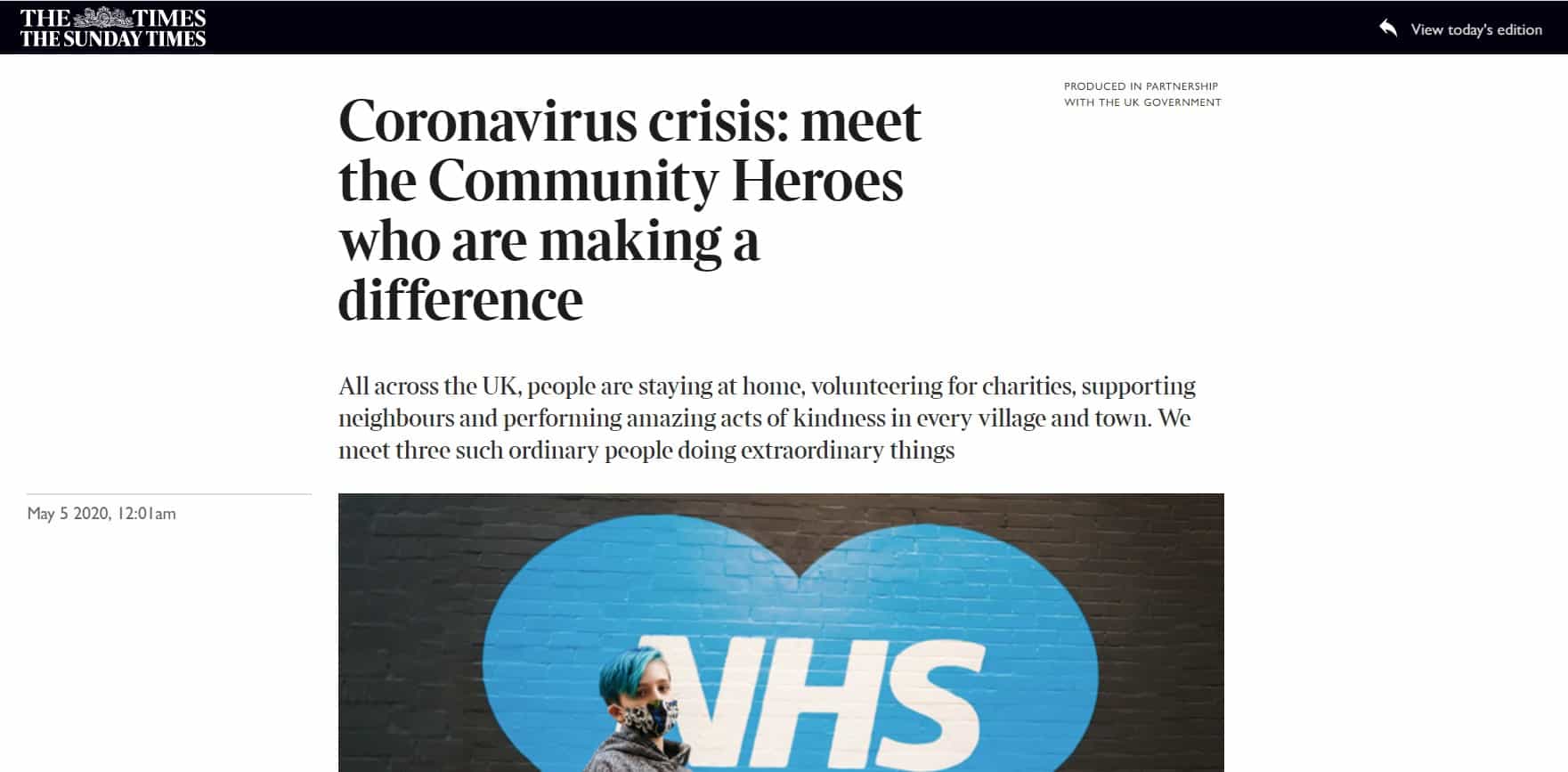
They are likely to form part of the “All in, all together” advertising campaign which claimed to be putting £35 million in the pockets of the beleaguered newspaper industry.
But according to this week’s Private Eye, the money is largely going to large newspaper groups which already have not-so-inconsiderable revenues.
The centre for community journalism at Cardiff University surveyed its network of independent local news publishers and found none of them had received a penny from the advertising spend.
Many of the titles selected also seem to be the ones who are most sympathetic to the governments response to the current crisis, making the marketing bonanza all the more perplexing.
The government is lining the pockets of large newspaper groups with editorials praising its coronavirus response.

The government appears to have orchestrated a wide-scale content marketing blitz across national newspapers including the Sun and the Daily Mail in a bid to secure some positive coverage of its coronavirus response.
Sponsored editorials were posted at around midnight on selected days throughout May pointing to how the government is helping to keep businesses “on the road”.

A number of similar pieces have appeared in regional publications, each highlighting how the support is helping firms in the area.

An FOI request has been filed to ascertain the cost of the positive media campaign, but unverified estimates suggest it could run into the hundreds of thousands of pounds.

They are likely to form part of the “All in, all together” advertising campaign which claimed to be putting £35 million in the pockets of the beleaguered newspaper industry.
But according to this week’s Private Eye, the money is largely going to large newspaper groups which already have not-so-inconsiderable revenues.
The centre for community journalism at Cardiff University surveyed its network of independent local news publishers and found none of them had received a penny from the advertising spend.
Many of the titles selected also seem to be the ones who are most sympathetic to the governments response to the current crisis, making the marketing bonanza all the more perplexing.
Counter-Errorist
THINK TANK
Coronavirus: South Korea closes schools again after biggest spike in weeks
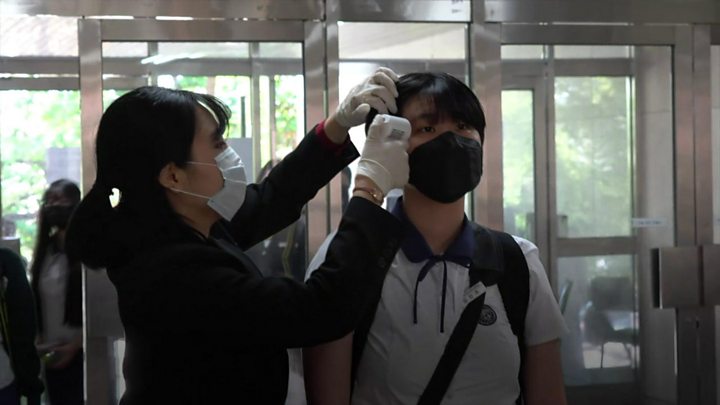
The BBC's Laura Bicker visited a school before the latest round of closures
More than 200 schools in South Korea have been forced to close just days after they re-opened, due to a new spike in virus cases.
Thousands of students had earlier on Wednesday returned to school as the country began easing virus restrictions.
But just a day later, 79 new cases were recorded, the highest daily figure in two months.
Most of these cases have been linked to a distribution centre outside Seoul.
The warehouse, in the city of Bucheon, is run by the country's biggest e-commerce firm Coupang, and officials have said the facility was not strictly complying with infection control measures. Health officials even discovered traces of Covid-19 on workers' shoes and clothes.
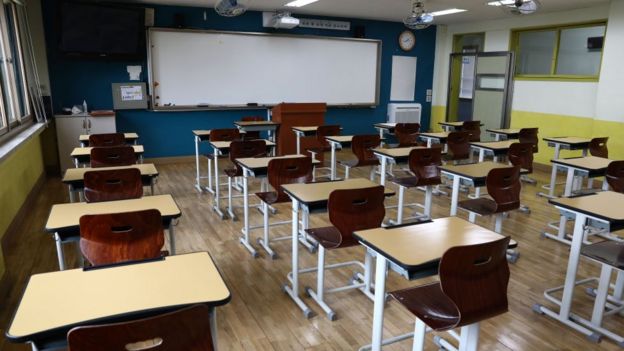
South Korea's classrooms have once again fallen silent
It's possible that South Korea will continue to see a rise in cases as it continues to test thousands of employees from the centre.
Some 58 new cases were recorded on Friday, bringing the total number of cases nationwide to 11,402.
A 'hotbed for the virus'
A total of 251 schools in Bucheon have now been forced to close. A report by the Korea Times, quoting the Ministry of Education, says a further 117 schools in the capital Seoul have also postponed their re-opening.
One student in Seoul, whose mother worked at the Coupang warehouse, had been found to have the virus.
Public parks and museums across Seoul and its surrounding cities have now been closed, businesses are being urged to encourage more flexible working, and people are once again being asked to avoid mass gatherings.
South Korea endured one of the worst outbreaks of the virus earlier this year, but had appeared to have brought it under control, thanks to an extensive "trace, test and treat" programme.
Recent weeks, however, have seen new clusters emerge, including one linked to a man who visited five nightclubs and bars in Seoul's nightlife district of Itaewon earlier this month.
According to Yonhap News, some 266 cases have been traced to the Itaewon cluster.

The BBC's Laura Bicker visited a school before the latest round of closures
More than 200 schools in South Korea have been forced to close just days after they re-opened, due to a new spike in virus cases.
Thousands of students had earlier on Wednesday returned to school as the country began easing virus restrictions.
But just a day later, 79 new cases were recorded, the highest daily figure in two months.
Most of these cases have been linked to a distribution centre outside Seoul.
The warehouse, in the city of Bucheon, is run by the country's biggest e-commerce firm Coupang, and officials have said the facility was not strictly complying with infection control measures. Health officials even discovered traces of Covid-19 on workers' shoes and clothes.

South Korea's classrooms have once again fallen silent
It's possible that South Korea will continue to see a rise in cases as it continues to test thousands of employees from the centre.
Some 58 new cases were recorded on Friday, bringing the total number of cases nationwide to 11,402.
A 'hotbed for the virus'
A total of 251 schools in Bucheon have now been forced to close. A report by the Korea Times, quoting the Ministry of Education, says a further 117 schools in the capital Seoul have also postponed their re-opening.
One student in Seoul, whose mother worked at the Coupang warehouse, had been found to have the virus.
Public parks and museums across Seoul and its surrounding cities have now been closed, businesses are being urged to encourage more flexible working, and people are once again being asked to avoid mass gatherings.
South Korea endured one of the worst outbreaks of the virus earlier this year, but had appeared to have brought it under control, thanks to an extensive "trace, test and treat" programme.
Recent weeks, however, have seen new clusters emerge, including one linked to a man who visited five nightclubs and bars in Seoul's nightlife district of Itaewon earlier this month.
According to Yonhap News, some 266 cases have been traced to the Itaewon cluster.
Counter-Errorist
THINK TANK
How the Pandemic Is Helping The Military Prep For World War III
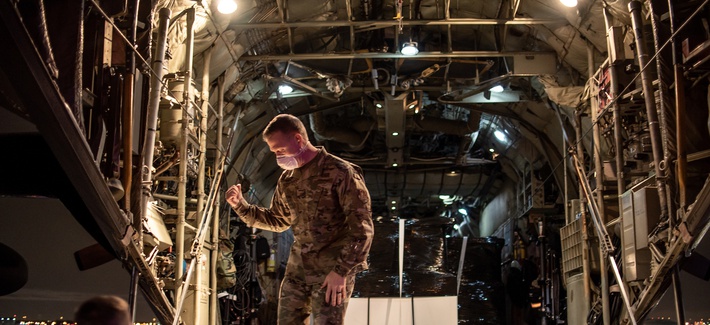
A local coronavirus response functioned as a crucial test of a new data network concept intended to deter Russia and China.
The April 14 briefing contained a warning for the commander of U.S. Northern Command: Stamford, Connecticut, about 56 miles northeast of New York City, was about to become a COVID-19 hotspot. It was a remarkably specific heads-up, and it arrived when only about 1 percent of the U.S. population had been tested, and well before tech companies began working through the complexities of launching contact-tracing apps.
It was a first-of-its-kind warning generated by an experimental data collection system tied into the Pentagon’s planned next-gen combat information effort. Although the data collection and prediction process was unproven, Gen. Terrance O’Shaughnessy and his commanders decided to trust it.
O’Shaughnessy dispatched an additional 53 medical personnel north to Stamford — and just in time: Manhattanites fleeing to the Connecticut suburbs helped cause a spike in Stamford’s coronavirus cases: 412 new cases on April 19; 2,109 on April 22.
The episode was an early and critical test of the Joint All-Domain Command and Control, or JADC2 concept. It envisions a system for keeping commanders abreast of complex and dynamic battlefields that is central to Pentagon visions of future warfare. The Stamford success was the fruit of a sub-system developed by NORTHCOM and contractors Apple, Google, Palantir, and geospatial intelligence company ESRI, to help pandemic responders rapidly report information up the chain of command.
“Our team has a better insight for predictive analysis as more of a comprehensive operating picture has been developed,” O’Shaughnessy told reporters on April 22. “JADC2 also helps us know where we should be looking for the next hotspots which is critical for the national approach to fighting COVID-19.”
You could be forgiven for assuming that the U.S. military is already pulling data from a variety of sources, pushing it up the chain of command, and then disseminating orders. And it is. But Hollywood depictions of big dashboards in the Pentagon where America’s top commanders micromanage military operations all over the world aren’t based in reality. Right now, getting info from the places where soldiers, sailors, and airmen are operating up to the highest level of authority is a slow, indirect process.
“We just didn’t have the tools available because we were essentially using tools from several decades ago, and using processes from several decades ago to get information from the edge,” said Lt. Col. Matt Strohmeyer, an action officer with the Commander’s Initiatives Group at NORTHCOM.
“We’ll have, let’s say, a deployed unit somewhere that’s helping out with a medical response, and they will every day get on the phone and they will communicate what’s going on, their numbers of ICU beds, or ventilators, or personnel that are sick, and then we’ll port that over phone to the next command echelon up,” said Strohmeyer. “That next command echelon up will put it into an Excel file, and then they’ll email it up to the next command echelon up, and then they’ll compile it in a new Excel file, and that process of what is essentially 1980s technology of aggregating data, that will happen probably somewhere between five to 10 times over at different command echelons, where it finally arrives at NORTHCOM headquarters about 24 hours later. And there the data is then aggregated into a static PowerPoint slide that’s presented to the commander, and that means that that data coming from the edge is very old and stale, and it’s certainly not real-time at all, and it also is very manpower-intensive.”
That process wasn’t an enormous hurdle when the U.S. military was trying to manage counter-terrorism operations in the Middle East. But they were a real obstacle to rapid response to a pandemic sweeping the nation. NORTHCOM had to push the status quo.
First, they outfitted personnel with devices to allow them to immediately report data that they were seeing into a central location, a cloud. While enterprise-level cloud computing is common in Fortune 500 companies, U.S. commanders have been slower to embrace it, in part because the military isn’t a single monolithic organism. Any particular unit or office might be working with a specific dataset and a specific cloud vendor that no one else is using.
As NORTHCOM confronted the pandemic, there were a lot of players with their own data sets and, in some cases, their own clouds. That data included reports from the medics in the field; geospatial economic, municipal, demographic and other data from ESRI; FEMA and other government data from Palantir; and more. NORTHCOM went to the Pentagon’s Joint Artificial Intelligence Center to house the data from these various partners.
One key aspect: ESRI’s effort to create a geographic picture of what was happening where. The privately-owned technology company based in Redlands, California, is having what you might call a moment in the midst of the COVID-19 crisis. If you go to the Johns Hopkins COVID-19 map, ESRI is a key component. The company provides geographic information services for cities, states and other government agencies for planning. It has a lot of census data to reveal things like income, spending levels, job types, family types, of different places. The data is either open source or comes from their wide user community (with permission). After disasters, different agencies can request specific software or data support to better show how the disaster has affected them, via the company’s disaster-response program.
“The nature of the pandemic is inherently geographic,” one company official said. (The official declined to be named because they weren’t authorized to speak to the media.) The pandemic, he said, generated more requests for support than “all other disasters put together.”
Individual counties and jurisdictions wanted to be able to do their own data collection and reporting on the crisis. The company was suddenly faced with the prospect of helping a wide variety of users handle a massive influx of rapidly changing data from a lot of different sources and in a constellation of different forms.
Federal agencies and even local governments had ESRI tools to organize and map data, but “what was often lacking was an infrastructure for health reporting… Because there isn’t a federal, national reporting system for this sort of thing, which is kind of mind-boggling. Johns Hopkins became a central authoritative source for data related to COVID-19,” said the company official.
The U.S. military combined that with other publicly available data as well as Defense Department information about where military personnel were, what supplies were available, etc. It created an interface that strikes much more closely to that Hollywood vision of digital command and control and much less like a PowerPoint slide, but one that was available to everyone at once, not just the generals in charge. That’s when the predictive insights began to pop out.
“We put it all together,” said NORTHCOM’s Strohmeyer, “and then with the help of MIT, Lincoln Labs, and others, it allowed us to start becoming predictive on where we thought the virus might be two weeks from now, and then overlay that on where might we have capacity shortfalls in the nation.”
Bottom line, if you want to know what areas of the country might be hard hit two weeks into the future, the military is a step ahead of you.
JADC2 isn’t a finished effort; it’s only just begun. In the years ahead, the Air Force, working with the Army, Navy, Marines, Coast Guard, and Space Force will take the lessons from Stamford and try to turn those into a model for networked warfare: a massive web connecting every satellite, sensor, ship, jet, drone, and gun on the battlefield. The hope is that JADC2 will allow commanders, guided by artificial intelligence, to rapidly swap in one weapon or tool for another in the middle of war, presenting enemies with what military strategists call “multiple dilemmas.” In essence, if every weapon on the field can be perfectly controlled simultaneously, then the enemy can’t prioritize defensive measures; they don’t know which planes, guns, ships, to target first.
The COVID-19 response shows that data can move between the Air Force, Navy, and Army in a way that does allow everyone to know what’s going on. It’s been a dress rehearsal in a way that some military exercises aren’t.
“The forces that we have deployed across the nation for COVID support is very much a joint force: Army, Air Force, Navy that is deployed forward into each one of those areas, and so the datasets that we’re working with from the beginning are also joint datasets,” said Strohmeyer.
The military sees JADC2 as essential to deterring Russia and China. In simulated wargames lately, the U.S. military isn’t faring well against those two potential adversaries. Pentagon strategists believe networked warfare will turn the tables.
“Achieving superiority against an adversary is all about making decisions faster than them,” Strohmeyer said. “The way that we make decisions is by getting the most accurate and aggregated data to that decision maker as quickly as possible so that they can achieve understanding of what’s going on, then make a decision.”
NORTHCOM’s Stamford success only goes so far. There’s a big difference between getting a heads-up in time to send a few dozen doctors around the country, and employing that system to direct forces in combat against a technologically advanced adversary.
But “I’m more encouraged the faster I see them move to faster adoption of commercial technology,” said the ESRI official, describing the military’s JADC2 ambitions. “Now they’re making the agility the priority.”
In addition to lots of spending, experimentation, and purchasing of new software and other equipment, achieving the networked-warfare vision will also require commanders to learn to be more receptive to what predictive analytics algos are telling them. “This is something the commander is really driving towards, ultimately a digital transformation of the NORAD and NORTHCOM Combatant Command, but it’s a digital transformation that isn’t just doing tech differently, doing data differently. It’s a culture change, and that’s one of the biggest challenges that we’ve found is transforming our culture to think differently about that,” said Strohmeyer.
Getting top commanders to second-guess their own presumptions — their “gut” — and go with what the data is telling them is a big ask. But the pandemic has proven that a lot of presumptions won’t work for the future.


A local coronavirus response functioned as a crucial test of a new data network concept intended to deter Russia and China.
The April 14 briefing contained a warning for the commander of U.S. Northern Command: Stamford, Connecticut, about 56 miles northeast of New York City, was about to become a COVID-19 hotspot. It was a remarkably specific heads-up, and it arrived when only about 1 percent of the U.S. population had been tested, and well before tech companies began working through the complexities of launching contact-tracing apps.
It was a first-of-its-kind warning generated by an experimental data collection system tied into the Pentagon’s planned next-gen combat information effort. Although the data collection and prediction process was unproven, Gen. Terrance O’Shaughnessy and his commanders decided to trust it.
O’Shaughnessy dispatched an additional 53 medical personnel north to Stamford — and just in time: Manhattanites fleeing to the Connecticut suburbs helped cause a spike in Stamford’s coronavirus cases: 412 new cases on April 19; 2,109 on April 22.
The episode was an early and critical test of the Joint All-Domain Command and Control, or JADC2 concept. It envisions a system for keeping commanders abreast of complex and dynamic battlefields that is central to Pentagon visions of future warfare. The Stamford success was the fruit of a sub-system developed by NORTHCOM and contractors Apple, Google, Palantir, and geospatial intelligence company ESRI, to help pandemic responders rapidly report information up the chain of command.
“Our team has a better insight for predictive analysis as more of a comprehensive operating picture has been developed,” O’Shaughnessy told reporters on April 22. “JADC2 also helps us know where we should be looking for the next hotspots which is critical for the national approach to fighting COVID-19.”
You could be forgiven for assuming that the U.S. military is already pulling data from a variety of sources, pushing it up the chain of command, and then disseminating orders. And it is. But Hollywood depictions of big dashboards in the Pentagon where America’s top commanders micromanage military operations all over the world aren’t based in reality. Right now, getting info from the places where soldiers, sailors, and airmen are operating up to the highest level of authority is a slow, indirect process.
“We just didn’t have the tools available because we were essentially using tools from several decades ago, and using processes from several decades ago to get information from the edge,” said Lt. Col. Matt Strohmeyer, an action officer with the Commander’s Initiatives Group at NORTHCOM.
“We’ll have, let’s say, a deployed unit somewhere that’s helping out with a medical response, and they will every day get on the phone and they will communicate what’s going on, their numbers of ICU beds, or ventilators, or personnel that are sick, and then we’ll port that over phone to the next command echelon up,” said Strohmeyer. “That next command echelon up will put it into an Excel file, and then they’ll email it up to the next command echelon up, and then they’ll compile it in a new Excel file, and that process of what is essentially 1980s technology of aggregating data, that will happen probably somewhere between five to 10 times over at different command echelons, where it finally arrives at NORTHCOM headquarters about 24 hours later. And there the data is then aggregated into a static PowerPoint slide that’s presented to the commander, and that means that that data coming from the edge is very old and stale, and it’s certainly not real-time at all, and it also is very manpower-intensive.”
That process wasn’t an enormous hurdle when the U.S. military was trying to manage counter-terrorism operations in the Middle East. But they were a real obstacle to rapid response to a pandemic sweeping the nation. NORTHCOM had to push the status quo.
First, they outfitted personnel with devices to allow them to immediately report data that they were seeing into a central location, a cloud. While enterprise-level cloud computing is common in Fortune 500 companies, U.S. commanders have been slower to embrace it, in part because the military isn’t a single monolithic organism. Any particular unit or office might be working with a specific dataset and a specific cloud vendor that no one else is using.
As NORTHCOM confronted the pandemic, there were a lot of players with their own data sets and, in some cases, their own clouds. That data included reports from the medics in the field; geospatial economic, municipal, demographic and other data from ESRI; FEMA and other government data from Palantir; and more. NORTHCOM went to the Pentagon’s Joint Artificial Intelligence Center to house the data from these various partners.
One key aspect: ESRI’s effort to create a geographic picture of what was happening where. The privately-owned technology company based in Redlands, California, is having what you might call a moment in the midst of the COVID-19 crisis. If you go to the Johns Hopkins COVID-19 map, ESRI is a key component. The company provides geographic information services for cities, states and other government agencies for planning. It has a lot of census data to reveal things like income, spending levels, job types, family types, of different places. The data is either open source or comes from their wide user community (with permission). After disasters, different agencies can request specific software or data support to better show how the disaster has affected them, via the company’s disaster-response program.
“The nature of the pandemic is inherently geographic,” one company official said. (The official declined to be named because they weren’t authorized to speak to the media.) The pandemic, he said, generated more requests for support than “all other disasters put together.”
Individual counties and jurisdictions wanted to be able to do their own data collection and reporting on the crisis. The company was suddenly faced with the prospect of helping a wide variety of users handle a massive influx of rapidly changing data from a lot of different sources and in a constellation of different forms.
Federal agencies and even local governments had ESRI tools to organize and map data, but “what was often lacking was an infrastructure for health reporting… Because there isn’t a federal, national reporting system for this sort of thing, which is kind of mind-boggling. Johns Hopkins became a central authoritative source for data related to COVID-19,” said the company official.
The U.S. military combined that with other publicly available data as well as Defense Department information about where military personnel were, what supplies were available, etc. It created an interface that strikes much more closely to that Hollywood vision of digital command and control and much less like a PowerPoint slide, but one that was available to everyone at once, not just the generals in charge. That’s when the predictive insights began to pop out.
“We put it all together,” said NORTHCOM’s Strohmeyer, “and then with the help of MIT, Lincoln Labs, and others, it allowed us to start becoming predictive on where we thought the virus might be two weeks from now, and then overlay that on where might we have capacity shortfalls in the nation.”
Bottom line, if you want to know what areas of the country might be hard hit two weeks into the future, the military is a step ahead of you.
JADC2 isn’t a finished effort; it’s only just begun. In the years ahead, the Air Force, working with the Army, Navy, Marines, Coast Guard, and Space Force will take the lessons from Stamford and try to turn those into a model for networked warfare: a massive web connecting every satellite, sensor, ship, jet, drone, and gun on the battlefield. The hope is that JADC2 will allow commanders, guided by artificial intelligence, to rapidly swap in one weapon or tool for another in the middle of war, presenting enemies with what military strategists call “multiple dilemmas.” In essence, if every weapon on the field can be perfectly controlled simultaneously, then the enemy can’t prioritize defensive measures; they don’t know which planes, guns, ships, to target first.
The COVID-19 response shows that data can move between the Air Force, Navy, and Army in a way that does allow everyone to know what’s going on. It’s been a dress rehearsal in a way that some military exercises aren’t.
“The forces that we have deployed across the nation for COVID support is very much a joint force: Army, Air Force, Navy that is deployed forward into each one of those areas, and so the datasets that we’re working with from the beginning are also joint datasets,” said Strohmeyer.
The military sees JADC2 as essential to deterring Russia and China. In simulated wargames lately, the U.S. military isn’t faring well against those two potential adversaries. Pentagon strategists believe networked warfare will turn the tables.
“Achieving superiority against an adversary is all about making decisions faster than them,” Strohmeyer said. “The way that we make decisions is by getting the most accurate and aggregated data to that decision maker as quickly as possible so that they can achieve understanding of what’s going on, then make a decision.”
NORTHCOM’s Stamford success only goes so far. There’s a big difference between getting a heads-up in time to send a few dozen doctors around the country, and employing that system to direct forces in combat against a technologically advanced adversary.
But “I’m more encouraged the faster I see them move to faster adoption of commercial technology,” said the ESRI official, describing the military’s JADC2 ambitions. “Now they’re making the agility the priority.”
In addition to lots of spending, experimentation, and purchasing of new software and other equipment, achieving the networked-warfare vision will also require commanders to learn to be more receptive to what predictive analytics algos are telling them. “This is something the commander is really driving towards, ultimately a digital transformation of the NORAD and NORTHCOM Combatant Command, but it’s a digital transformation that isn’t just doing tech differently, doing data differently. It’s a culture change, and that’s one of the biggest challenges that we’ve found is transforming our culture to think differently about that,” said Strohmeyer.
Getting top commanders to second-guess their own presumptions — their “gut” — and go with what the data is telling them is a big ask. But the pandemic has proven that a lot of presumptions won’t work for the future.

- Patrick Tucker is technology editor for Defense One. He’s also the author of The Naked Future: What Happens in a World That Anticipates Your Every Move? (Current, 2014). Previously, Tucker was deputy editor for The Futurist for nine years. Tucker has written about emerging technology in Slate, ... FULL BIO
@Zeeman
You seen Trump's latest tweets? Antifa is not even a real organization but him and his attorney general want to go after imaginary far left extremist groups as they put it. The situation is about to die down and he surprises us by trying to still foment more unrest. He's putting the nations security at risk and his presidency at risk too if he keeps this up.
You seen Trump's latest tweets? Antifa is not even a real organization but him and his attorney general want to go after imaginary far left extremist groups as they put it. The situation is about to die down and he surprises us by trying to still foment more unrest. He's putting the nations security at risk and his presidency at risk too if he keeps this up.
space cadet
SENIOR MEMBER
@Gripen9 , is antifa real? I bet you know
I don't know. They have been declared as terrorist outfit by Trump though. I have been in Seattle since 2016, prior to that Chicago since 2003. Never actually saw them in any shape or form.@Gripen9 , is antifa real? I bet you know
I work for "the online" retailer. The company gets targeted every mayday from people who believe to have been marginalized socio-economically.
We do have security teams that monitor the "dark" side of the web along with 4Chan and "Blac Blok" (I just learned that yesterday from a white colleague). They heard chatter of proud boys driving up from Oregon to cause mayhem.
Today, there was looting at Bellevue (an eastern suburb of Seattle) and Police Chief said during a press conference that they had Intel that gangs from outside were coming specifically to loot.
Unfortunately these Agent Provocateurs have achieved their objectives to some degree which is to change the narrative from Systemic Police abuse of minorities to Looting, arson and vandalism.
space cadet
SENIOR MEMBER
Well guys, even the New York Times acknowledges their existence

 www.nytimes.com
www.nytimes.com

What Is Antifa, the Movement Trump Wants to Declare a Terror Group?
President Trump has blamed anti-fascist protesters for inciting violence at protests and tried to link “far left” activists to his mainstream Democratic opponent, Joe Biden.
space cadet
SENIOR MEMBER
some good news
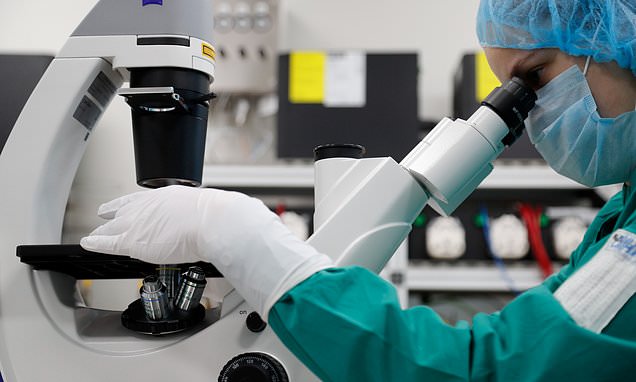
 www.dailymail.co.uk
www.dailymail.co.uk

Pittsburgh doctors say coronavirus appears to be declining in potency
Dr Donald Yealy of the University of Pittsburgh Medical Center explained on Thursday that people seem to be contracting COVID-19 less easily than when the pandemic began earlier this year.
space cadet
SENIOR MEMBER
seems like there is a new outbreak in China every month
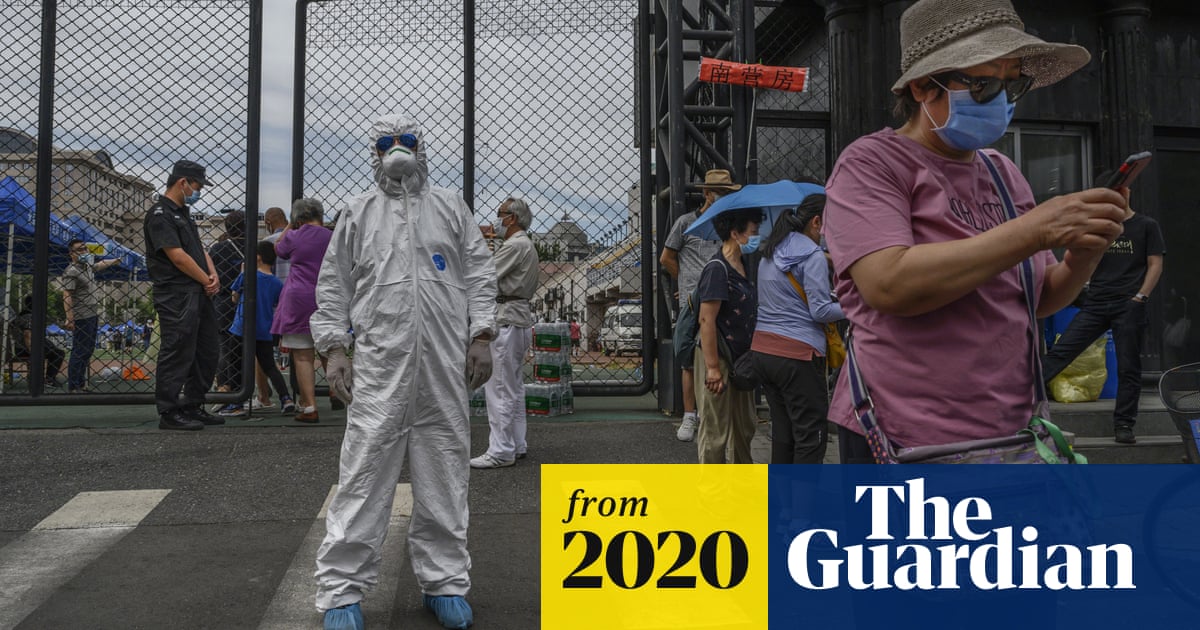
 www.theguardian.com
www.theguardian.com

Beijing coronavirus outbreak: travel restricted to tackle 'extremely severe' situation
Restrictions on travel to and from China capital brought in as neighbourhoods sealed off and venues close
space cadet
SENIOR MEMBER
young people aren't practicing social distancing, spike in 20 somethings.Florida and Texas experiencing highest hospitalization .
It's really sad. Florida governor is a certified idiot and Texas unfortunately followed Florida. I remember when during the bigning of the crisis everyone was asking Florida to take it easy and not open beaches but they did it any ways.
space cadet
SENIOR MEMBER
I was shocked the last time I was at grocery store, saw multiple elderly people without masks
space cadet
SENIOR MEMBER

Hydroxychloroquine saved coronavirus patients' lives, Michigan study shows
Hydroxychloroquine's effects had been called into question after a series of studies and controversies since it was promoted by President Trump.
www.freep.com
